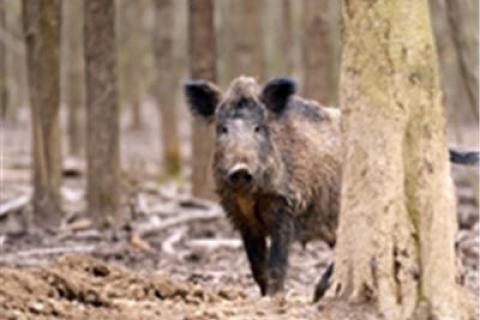
Feral hogs have now invaded at least 39 states, including Hawaii, and four Canadian provinces. So, how do you know if pesky pigs have staked claim to your neck of the woods? Here are four surefire signs of hog activity:
![]() Shop hunting gear at Bass Pro Shops
Shop hunting gear at Bass Pro Shops
Tracking Down a Hog Infestation
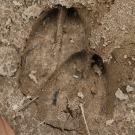 |
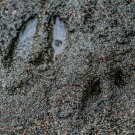 |
| Hog tracks | Deer tracks |
As with any big game, the first sign of activity is often tracks. While deer and hog tracks share a few similarities, the differences are easy to spot. Hog tracks are generally rounded, whereas deer tracks are more pointed—even spade like. If a hog’s dew claws are noticeable, they are most often wider than the hoof print. Deer dew claw imprints generally do not extend beyond the width of the main hoof. Tracks can provide clues about size, direction of travel, and hog numbers.
The Root of the Problem
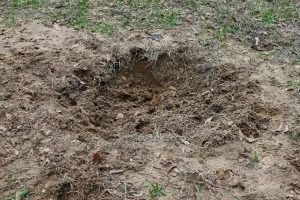
Nothing screams feral hog problem more than rooting. Feral hogs use their snouts to dig and push soil around in search of ground level and subterranean food sources. Rooted fields have the appearance of being freshly tilled. At first, rooting occurs in random patches; before long, entire fields, especially crops are rooted up. Rooting can cause significant injuries to livestock and costly damages to farming equipment. When large scale rooting is prevalent, trapping and depredation hunts are critical to reclaim lost ground.
Wallowing is Dirty Work
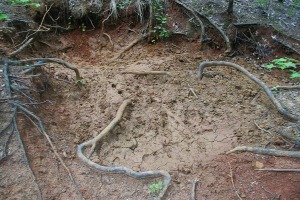
Wallows are shallow pools of mud and water used by feral hogs to control insects, body temperature and just plain relax. Like rooting, wallows generally begin as smaller, random pockets of mud but can quickly grow to enormous proportions. The size of a wallow can offer some perspective of how much activity the site is receiving and whether your problem is fleeting or an infestation. Pay attention, wallows are great places to find a wealth of other sign, including tracks and muddy tree trunks.
Junk on the Trunk
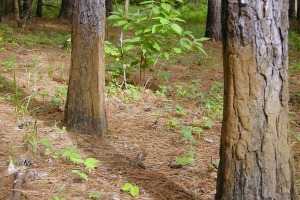
When you find potential wallows, be sure to inspect nearby tree trunks, fence posts, and telephone poles (especially creosote-treated). If hogs are present these are sure to be layered in mud. After a routine roll in the mud, feral hogs, like domestics, often rub against them to remove excess mud and parasites—and maybe scratch an itch. Rubs give us great information, including animal size and the presence of a water source nearby.
While these signs certainly indicate feral hog activity in your neck of the woods, they don’t prove little piggies have built permanent homes of straw, sticks and bricks. Hogs are generally nomadic so short-term issues may be the results of groups simply moving through. Truly, the best way to determine whether signs point to fleeting hunting opportunities or a down-and-dirty pig problem is active scouting. There is no substitute for trail cameras, binoculars, a notepad, and some good old fashioned legwork.
![]() TIP: Beginner to Intermediate Level Hog Hunting
TIP: Beginner to Intermediate Level Hog Hunting
![]() TIP: Hog Hunting Shoot Placement - don't make this common mistake
TIP: Hog Hunting Shoot Placement - don't make this common mistake
- 21349 views

